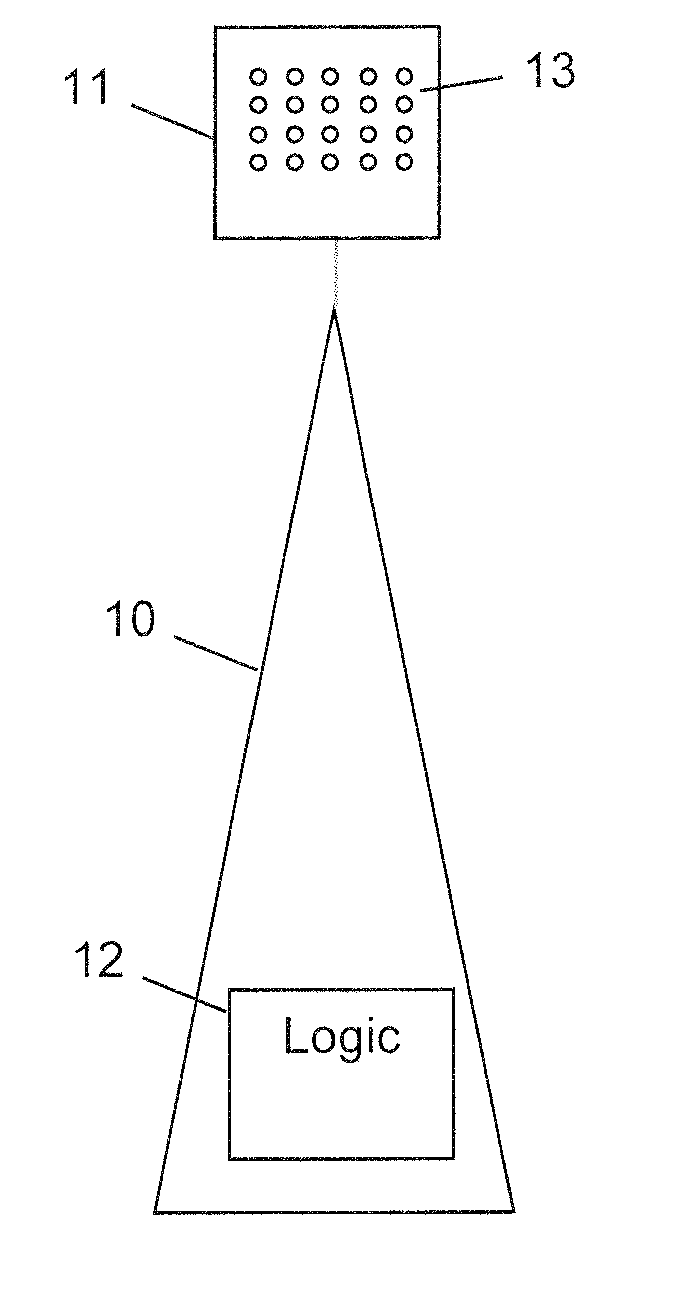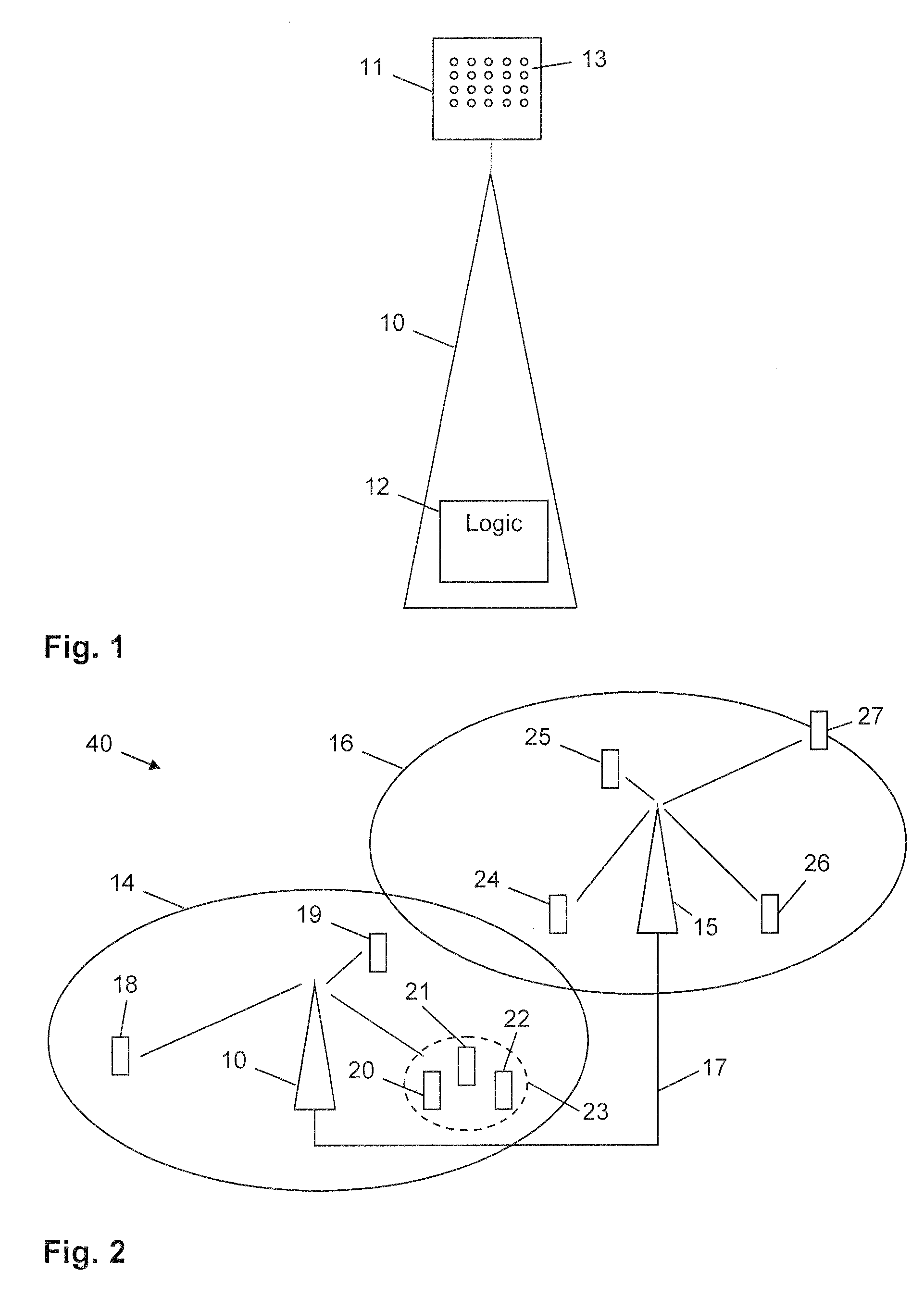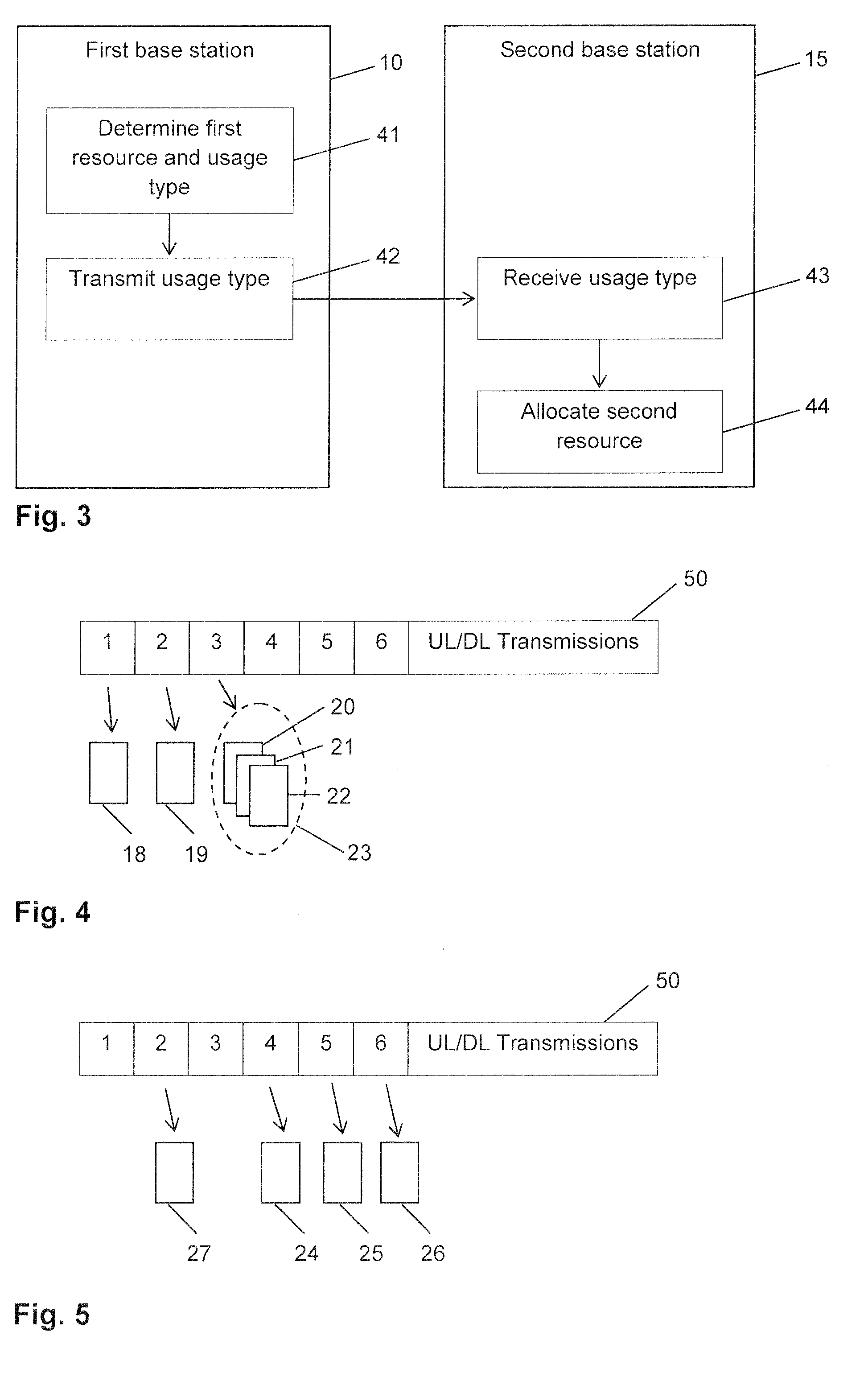Pilot signal resource allocation for a cellular MIMO system
a technology of pilot signal and signal resource, applied in the field of cellular communication systems, can solve the problems of low probability of contamination or interference of a higher number of terminals, and achieve the effect of keeping the contamination or inference between the transmitted pilot signal and lowering the probability of contamination or interferen
- Summary
- Abstract
- Description
- Claims
- Application Information
AI Technical Summary
Benefits of technology
Problems solved by technology
Method used
Image
Examples
Embodiment Construction
[0029]In the following, exemplary embodiments of the present invention will be described in more detail. It is to be understood that the features of the various exemplary embodiments described herein may be combined with each other unless specifically noted otherwise. Same reference signs in the various drawings refer to similar or identical components. Any coupling between components or devices shown in the figures may be a direct or indirect coupling unless specifically noted otherwise.
[0030]FIG. 1 shows schematically a base station 10 according to an embodiment of the present invention, which may be used in a cellular multiple-input and multiple-output (MIMO) communication system. Therefore, in the following, the base station 10 will be also called MIMO base station. The MIMO base station 10 comprises an antennas array 11 including a plurality of antennas 13. The MIMO base station 10 may have large number of antennas 13, such as several tens or in excess of one hundred antennas. ...
PUM
 Login to View More
Login to View More Abstract
Description
Claims
Application Information
 Login to View More
Login to View More - R&D
- Intellectual Property
- Life Sciences
- Materials
- Tech Scout
- Unparalleled Data Quality
- Higher Quality Content
- 60% Fewer Hallucinations
Browse by: Latest US Patents, China's latest patents, Technical Efficacy Thesaurus, Application Domain, Technology Topic, Popular Technical Reports.
© 2025 PatSnap. All rights reserved.Legal|Privacy policy|Modern Slavery Act Transparency Statement|Sitemap|About US| Contact US: help@patsnap.com



